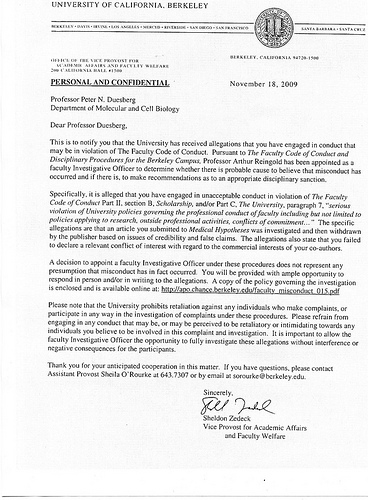>newmath2.trial
function (trial = 1, total.trials = 5, problem=newmath2.problems[1,],condition= “testing”, wait.range=c(1500,2500), num.possible=9, note = “”)
{#give one trial. returns list with components wait, answer.msec, etc.
#(“okay” or “aborted”) and results.
#
#             trial            trial number
#             total.trials     trials per session
#             problem          problem, answer (characters)
#Â Â Â Â Â Â Â Â Â Â Â Â Â condition
#             wait.range       range of wait times (msec)
#             num.possible     number of possible wait times
#Â Â Â Â Â Â Â Â Â Â Â Â Â note
#
tn=paste(“trial”,trial,”of”,total.trials)
msg=press.space.to.start(below=tn, col = “brown”)
if(msg==”end session”) return(“end session”)
wait.msec=newmath2.foreperiod(wait.range=wait.range, num.possible = num.possible)
t=newmath2.problem(problem=problem)
newmath2.feedback(problem=problem[1],answer.msec=t$answer.msec,correct=t$correct,status=t$status)
list(wait.msec=wait.msec, answer.msec=t$answer.msec,actual.answer=t$actual.answer, correct=t$correct,include=t$include,status=t$status)
}
> press.space.to.start
function (msg = “press space”, prompt = “to start”, below=””, beepf=FALSE, bottom =”press letter to end session”, col = “red”, text.size=5)
{#wait for Enter to start data collection with getGraphicsEvent
#
#             beepf    beep after input?
#
paint(center=prompt, above = msg, below=below, bottom = bottom, text.size=text.size, col = col)
msg=”get answer”
while(msg==”get answer”) {
t=getGraphicsEvent(prompt=””,onKeybd=get.key)
if(beepf) beep()
if (t==” “) msg=”okay”
if (t %in% strsplit(alphabet,split=””)[[1]]){
msg = “end session”
paint(“ending session”)
}
}
msg
}
> newmath2.foreperiod
function (wait.range=c(1000,2000), num.possible = 9)
{#delay for interval randomly selected within given range. Returns
#wait in msec
#
#         wait.range     lower and upper possible delays (msec)
#         num.possible   number of possible waits (which are equally spaced)
#
#
possible.waits=seq(from = wait.range[1],to = wait.range[2], length.out = num.possible)
wait.msec=sample(possible.waits,1)
paint(“|”,duration = wait.msec/1000)
wait.msec
}
> newmath2.problem
function (problem = c(“3+4″,”7″),status = “okay”)
{#show new arithmetic problem. Returns list of latency,
#answer, right/wrong, and note.
#
#                    problem  vector of problem and answer (both characters)
#                    status   status
#
newmath2.show(problem[1])
see.time = Sys.time()
actual.answer=getGraphicsEvent(prompt=””,onKeybd = get.key)
resp.time< <-Sys.time()
answer.msec=as.integer(1000*difftime(resp.time,see.time,unit=”sec”))
if(!actual.answer %in% as.character(c(0:9))){
actual.answer=””
answer.msec=NA
correct=NA
include=FALSE
if (an==”q”) status = “abort session” else status=”abort trial”
}
else {
correct=actual.answer==problem[2]include=TRUE
status=”okay”
}
list(answer.msec=answer.msec,actual.answer=actual.answer,correct=correct, include=include, status = status)
}
> newmath2.feedback
function (trial = 5, problem = “3+4″, actual.answer=7, status= “”, answer.msec = 639, correct = TRUE, number.back=15)
{#give feedback on trial
#
#           trial        trial number
#           problem      problem shown
#Â Â Â Â Â Â Â Â Â Â Â actual.answer actual answer (numeric)
#           correct      correct?
#           status       anything unusual?
#           answer.msec  latency of answer (msec)
#           number.back  compare this rt with how many back?
#
if(status==”abort block”){
paint(“block aborted”,duration = 1.5)
return()
}
if(status==”abort session”){
paint(“session aborted”,duration = 1.5)
return()
}
if(!correct){
paint(“wrong”,duration = 1.5)
return()
}
previous.answer.msec=newmath2$answer.msec[(problem==newmath2$problem)&newmath2$correct&newmath2$include]ptile=newmath2.ptile(answer.msec,previous.answer.msec)
ptile.msg=paste(round(ptile),”%ile”,sep=””)
whole.msg=paste(answer.msec,”ms”,ptile.msg)
paint(whole.msg, text.size = 4, col = “blue”, duration = 1)
}
> paint
function (center=””,above=””,below=””, bottom = “”, x = 0, y = 0,xlim = c(-1,1),ylim = c(-1,1),text.size=4, small.size = 2, duration = 1, col=”red”, new = TRUE)
{# write text on graph, clearing previous
#
#               center        text for middle of graph
#               above         text above that
#               below         text below that
#               bottom        small text at bottom
#               x             x location of text
#               y             y location
#Â Â Â Â Â Â Â Â Â Â Â Â Â Â Â xlim
#Â Â Â Â Â Â Â Â Â Â Â Â Â Â Â ylim
#               text.size     cex value
#               small.size    cex value for small text
#               duration      wait (sec) before continuing
#               col           color
#               new           erase what was there?
#
if (new) plot(0,0,xlab=””,ylab=””,xaxt=”n”,yaxt=”n”,type=”n”, xlim=xlim, ylim = ylim)
text(center,x=x,y=y, cex = text.size, col = col)
text(above,x=x,y=y+.3, cex = text.size, col = col)
text(below,x=x,y=y-.3, cex = text.size, col = col)
text(bottom,x=x,y=y-.85, cex = small.size, col = col)
Sys.sleep(duration)
}
